Mahindra Takes On Maruti: Writes Letter To Govt Seeking No Dilution In CAFE 3 Norms
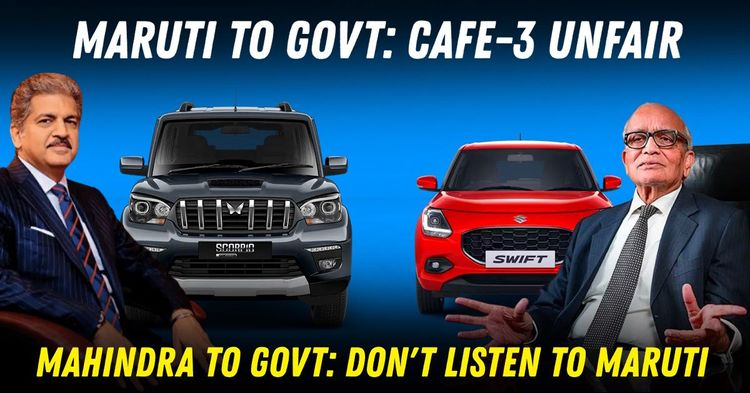

A new phase of fuel economy regulations is set to kick in for carmakers, and it is already causing friction among industry giants. Known as CAFE 3 norms, the third stage of the Corporate Average Fuel Efficiency framework aims to tighten the fuel consumption limits across a manufacturer’s entire fleet.
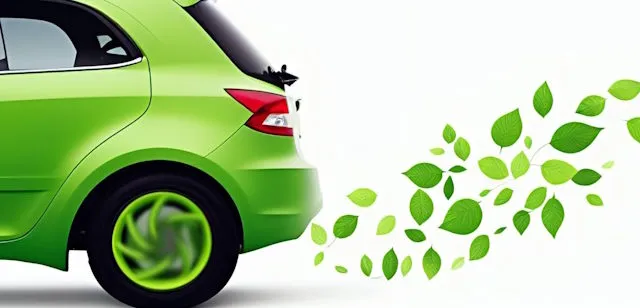
These rules are part of India’s broader strategy to reduce vehicular emissions and improve energy security. Under CAFE norms, each company must ensure that the average fuel efficiency of all its vehicles sold in a year meets a specific target, which becomes progressively stricter over time. This target is adjusted based on vehicle weight, meaning heavier vehicles are allowed slightly lower efficiency scores than lighter ones.
The upcoming CAFE 3 stage, which aligns with the 2030 global climate goals, requires manufacturers to significantly reduce CO2 emissions. Unlike the earlier phases, which were more lenient and allowed compliance through low-hanging upgrades, CAFE 3 effectively pushes companies toward hybridisation, electrification or substantial engine technology overhauls. That is where the trouble starts for carmakers with very different portfolios.
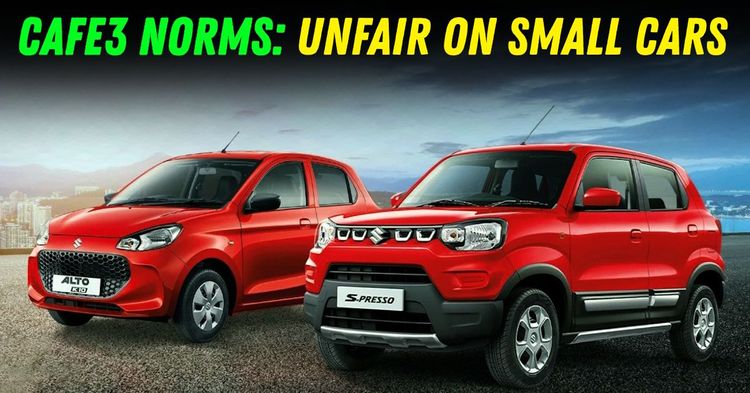
Maruti Suzuki, India’s largest carmaker by volume, has sounded the alarm over the impact of these new rules on its core product lineup. The company has written to the government, urging a reconsideration or dilution of the proposed norms. Maruti argues that the structure of the CAFE formula inherently disadvantages companies that focus on compact, lightweight cars with petrol engines.
Because CAFE targets are based on vehicle weight, small and light cars are held to higher fuel efficiency standards than heavier vehicles. This works against manufacturers like Maruti, whose lineup includes cars such as the Alto, WagonR, Swift and Baleno. These cars are already engineered for high efficiency, leaving little room for further gains without significant cost escalation.
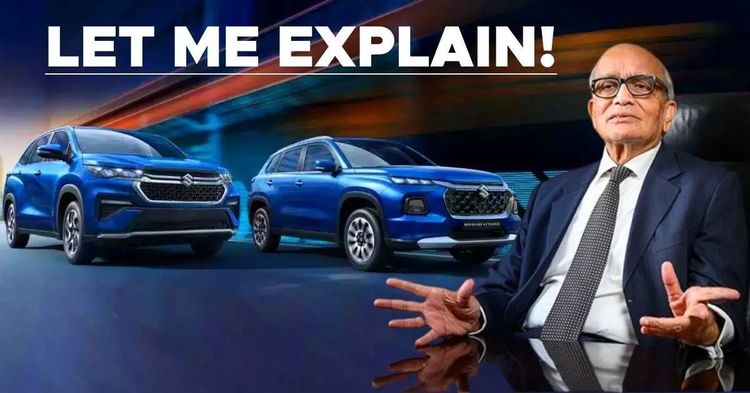
Maruti believes that if CAFE 3 is enforced in its current form, it will become unviable to produce affordable small cars. This could price out entry-level buyers and shrink a segment that has historically driven volumes. The company is also facing pressure due to its limited use of electrified powertrains, as it currently relies mostly on petrol-only setups and mild hybrids. While Maruti has plans for EVs and stronger hybrids, they are still a few years away from widespread deployment.
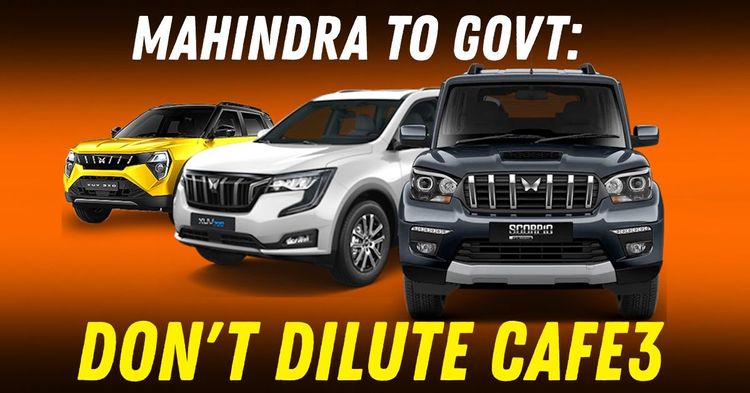
Mahindra & Mahindra, a manufacturer known for rugged and heavy-duty SUVs, has taken the opposite position. The company has reportedly written to the government, asking it not to dilute or delay the implementation of CAFE 3. Mahindra supports the stricter rules, arguing they are necessary to drive technological innovation and achieve sustainability goals.
From Mahindra’s perspective, the current weight-based formula actually works in its favour. Its vehicles, including the XUV700, Scorpio-N and Thar, are much heavier than compact hatchbacks. As a result, their efficiency targets under CAFÉ 3 norms are relatively more lenient. Mahindra also believes that it is already investing in the right direction, with a growing focus on electric vehicles and hybrid-ready platforms.
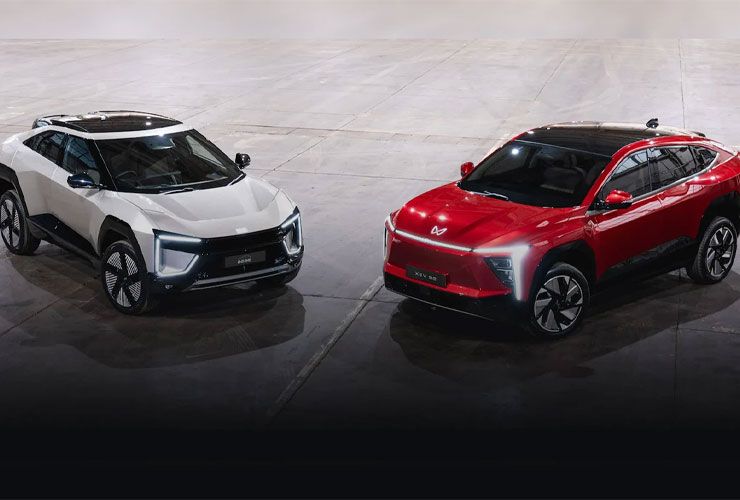
The company has unveiled a future-facing EV roadmap, including models under the BE and XUV.e sub-brands. It has also committed to cleaner diesel technologies and plans to roll out more electrified options in the coming years. Mahindra’s argument is that tough norms will encourage long-term innovation, while relaxing the standards would reward companies that have not invested enough in cleaner powertrains.

At the heart of this debate is a fundamental difference in approach. Maruti is built around mass-market vehicles, with cost-efficiency and fuel savings as key selling points. It sees CAFE 3 as a threat to the affordability of small cars. Mahindra, on the other hand, is focused on larger vehicles with higher margins, and sees the new norms as a step toward a more premium, future-ready product portfolio.
This disagreement also exposes the limitations of a one-size-fits-all regulation in a diverse market. While the rules aim to cut emissions and improve air quality, they could inadvertently push smaller cars out of the market. That would be a major shift for a country where compact cars have long been the preferred choice for first-time buyers and middle-class families.
The government now faces a tricky balancing act. On one side is the need to stay on course with its climate commitments and encourage cleaner mobility solutions. On the other is the risk of disrupting the small car market, which still accounts for a large share of total vehicle sales.
Whichever way the decision swings, the outcome will have far-reaching implications. For Maruti, it could mean an urgent acceleration of hybrid and EV plans. For Mahindra, it would validate its current strategy and give it a competitive edge. And for consumers, it might signal the beginning of the end for ultra-affordable petrol cars.
The battle over CAFE 3 is no longer a behind-the-scenes policy discussion. It is now a visible fault line between two titans of the industry, each fighting for a future that suits their strengths.